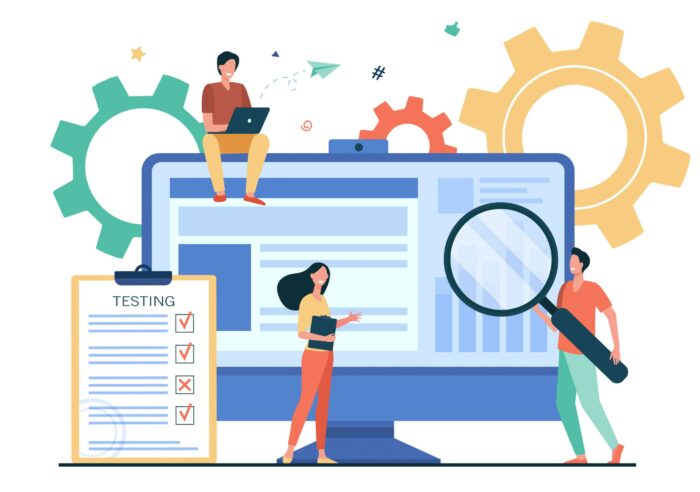
The IT industry would never be complete without software testing. This position, while often underpaid, is essential for any software product. Without passing through this stage, the product cannot be put on the market. The quality of the IT product itself depends on the quality of the testing.
The need for a software tester is constantly growing. A large number of universities are introducing courses that will prepare engineers for this kind of work position. The directions in which testers can work vary from manual testing to different levels of performance testing, such as automation – web, mobile, web services, as well as any kind of software that facilitates the work. Automated testing is commonly practiced, but this process should also be followed by experienced professionals. This is why education and personal development are important.
There are various types of testing, such as:
- Functional testing
- Non-functional testing
- Security test
- Test the scalability of the application
- Possible fall test
- Load test
- Performance test
- Disaster Recovery Test
Today’s topic of our article is functional testing, which is the most basic form of software testing. This is the most common form of testing these days, and no testing process can even start without it.
IT companies often have a department dedicated to exactly this task. You can discover this info to see that there are also external teams that do testing, especially when the company does not develop many products and it is not profitable to hire test engineers.
However, let’s start from the beginning:
What is functional testing and how is it done?

Functional testing is checking software or application whether it satisfies basic and set functionalities. Most often, black box testing appears as an integral part, which is not related to the code, but generally to the user experience.
There are several stages:
- Testing the main functions of the application
- Testing basic usability, navigation, and user experience
- Accessibility testing
- Error reporting under certain conditions
For this purpose, you need to understand the functional requirements, identify the input and output data, test specific cases and compare the obtained results.
But can you facilitate or optimize this process? Each of us has a different approach to work, which means that testing can be carried out in different ways, and ultimately achieve the same results.
Here are some tips on how to do better in this job position:

1. Write reusable test cases
If you work in a specific industry, then the testing is almost always similar and you can reuse methods you’ve already used. Some software testers write their own short programs that shorten the testing time. In this way, procedures known as test cases are created, which are a great way to manage what you do and how you plan the testing process.
2. Prioritize tasks
We are sure that you use some kind of collaboration tool and at any moment you know what your next task is. Because of that, it’s easy to organize yourself every day and even make a broader schedule of how to work during the week.
Thanks to prioritization, you can easily record the documentation and then prepare the current reports.
Of course, priority should be urgent and risky tasks, which require more attention and skills. Leave the ones you know won’t take much time to finish. In this way, you are also productive, but also manage to complete all tasks within the given deadline.
3. Automate only those processes that allow it
Automation is an essential part of productivity and project realization. Of course, automate less risky processes. For more complex processes, prefer a manual approach and pre-written procedures.
Don’t automate the programs that require more attention or those you need to report in phases or by milestones.
4. Track the time you need to test

Most of the time, the tasks are not time-limited, but it is good to keep track of what you spend most of the working day on. That way, you will be able to organize yourself better and you will know how many tasks you can accept in one day.
Be aware that even functional testing can take longer than you planned. During the process itself, you should constantly enter notes and report problems to the right place.
Depending on the project, you should report them either an error by error or as a complete report at the end of the process. That decision depends only on the way the company operates.
5. Test in phases
Complex solutions sometimes need to be broken down into different phases. That way, you make your work easier and report to the developers more easily. You should especially apply this to complex software solutions in the earliest stages of development.
In this way, you yourself are more focused on efficiency and you don’t risk missing a bug.
6. Follow a specific script
To be sure of your effectiveness, it is good to create a scenario to guide you. Start from yourself, but as a user of the application or software, not as an engineer.
For example, if you are testing an eCommerce business, then start by searching the categories, finding the products, adding to the cart, then ordering. Proceed to checkout and receive an order confirmation. Also, follow the mail tracking service and test what happens when you receive a notification that the message has been delivered.
Only by creating these scenarios yourself will you be able to get to the heart of functional software testing.

Conclusion
As you can see, it is a profession that requires a lot of focus and attention, but also time management and priorities. However, it is not impossible to become a professional.
There are many academies where you can learn the secrets of software testing. But the most important thing is that in every possible scenario, you should first understand functional testing, and then move on to the more serious stages and get into the smallest details that make an application great for users.
Do you find this article helpful? Share your opinion with us.
















